DIAMOND SYMMETRY
LEARN ALL ABOUT THE SYMMETRY OF A DIAMOND
This post contains affiliate links. If you use these links to buy something I may earn a commission. Thanks! As an Amazon Associate I also earn from qualifying purchases.
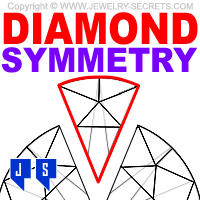
Diamond Symmetry plays a huge role in the Beauty, Sparkle and Brilliance a Diamond gives off.
The more Symmetrical a Diamond is, the better it will look and the better it will react with light.
Since the Round Brilliant Cut Diamond is the main Diamond of choice, that’s the Shape we’ll concentrate on for this post.
The first clue to Symmetry is going to be the actual Shape or Outline of the stone. Is it Round? Roundish? Ovalish? Most Diamonds are not Cut perfectly Round. This is best demonstrated on any GIA Diamond Report (Certificate). You’ll see under Measurements something like this: 6.53 – 6.55 x 3.96 mm. (I’m using a 1.00 Carat Diamond for this example).
The first 2 numbers in the Measurements refer to the Diameter of the Diamond, measured from one side of the Girdle to the opposite side of the Girdle in 2 different spots. Usually Horizontally and Vertically. The third number is the actual Depth of the Diamond from the top of the Crown to the bottom of the Pavilion.
The first 2 numbers will show you how Round your Round Diamond really is. A perfectly Round stone would be 6.5 – 6.5. That would show it’s the same measurements all the way around the stone. This of course, almost never happens. You’ll see it off by tenths of a millimeter in many cases.
Some Diamonds get really extreme in how much they vary. Many are off slightly like 6.55 – 6.65 or even 6.55 – 6.78. That would leave the stone more Roval (Round and Oval) or even Oval in Shape.
If the stone is off by a lot, you may want to reconsider purchasing it.
An example of an Out of Round Diamond is below…
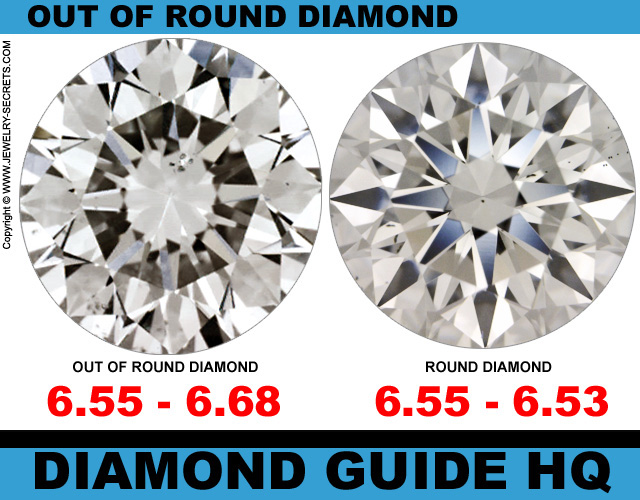
To better understand Symmetry, let’s take a look at the Facets of a Diamond.
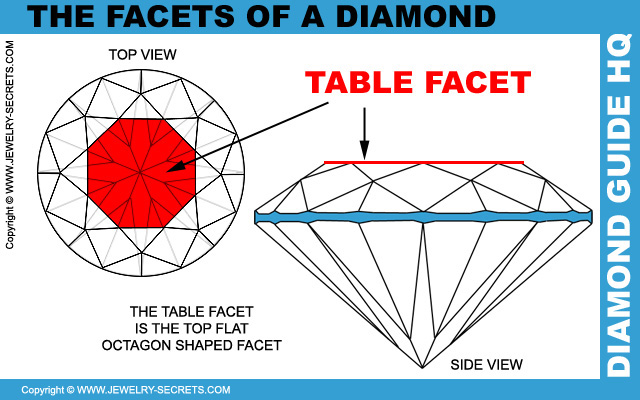
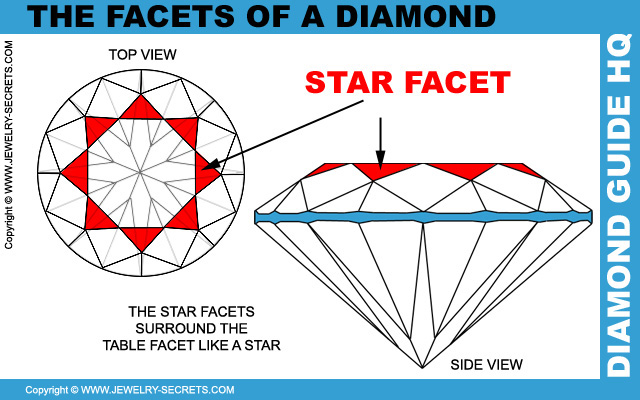
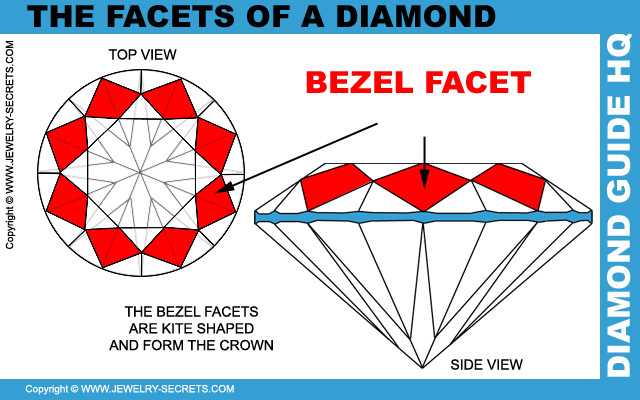
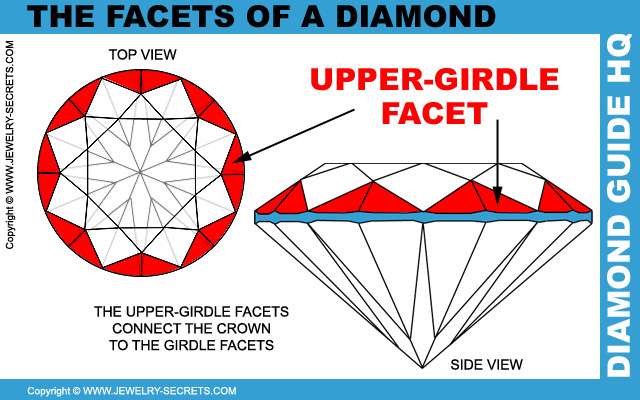
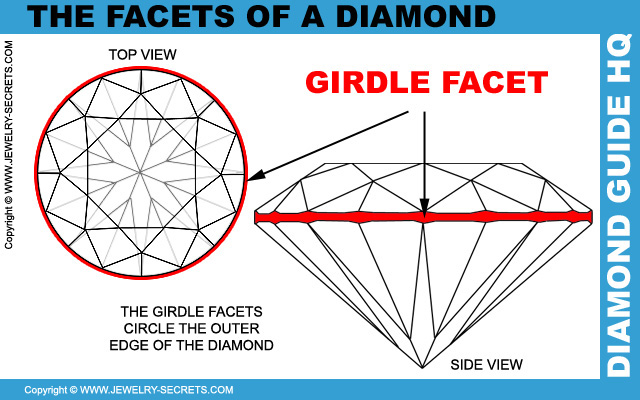
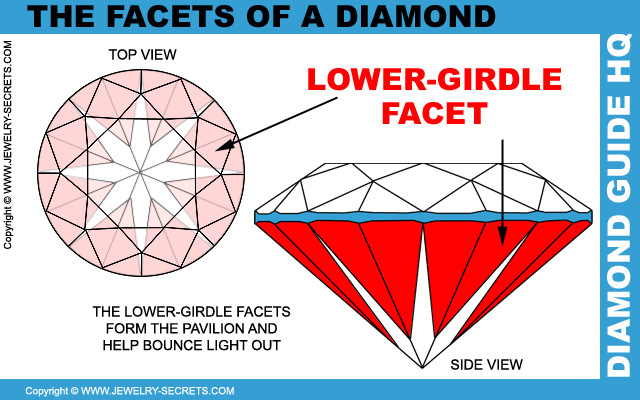
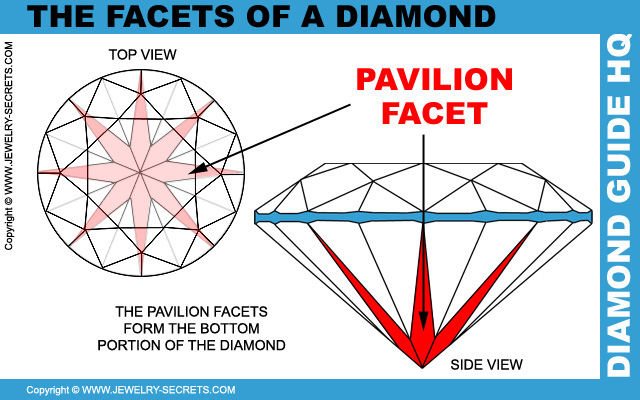
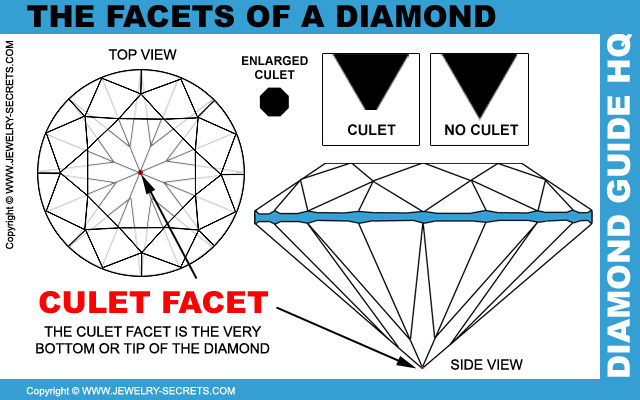
Most Diamond Charts or Diagrams picture Diamonds looking this way. But these are just Diagrams and not the actual Diamonds or Facets that your Diamond may have.
In reality, many Diamonds actually look like this…
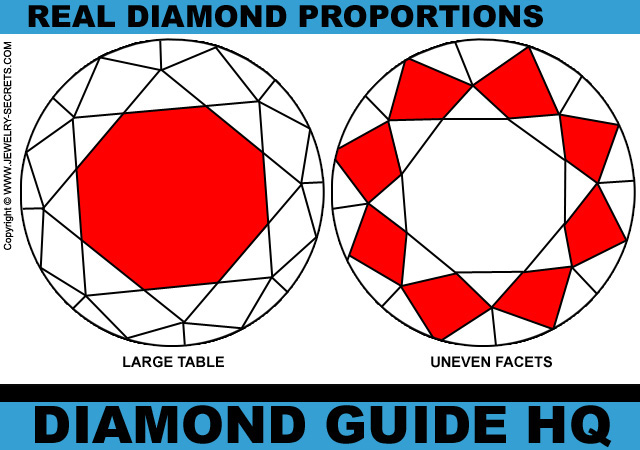
Those Diamonds all have the same amount of Facets. They all have the right amount of Crown Facets and Pavilion Facets, and they may even have them in the correct spots, but the Facets aren’t properly proportioned. They are Distorted and Skewed. Cutting Perfect Diamonds is a science and most Diamonds are not Cut perfectly all due to the amount of Inclusions in the stone, the Cleavage Lines, and the amount of Parent Rock available to the cutter.
The result is often the Diamond Symmetry being sacrificed. A fatter Facet here, a chopped off edge there, an uneven Girdle, an off-center Culet…
Many things affect the Symmetry of a Diamond…
Crown Angles, Table Sizes. Symmetry in the best Cut Diamonds should be identical all the way around. Each Star Facet should be the exact Shape, Size and Length as another Star Facet. Same with the Upper Girdle Facets and Bezel Facets. They should, in a perfect world, all be the same.
If you break apart a Brilliant Cut Diamond into pie shaped pieces, you should see eight identical and symmetrically perfect sections like such…
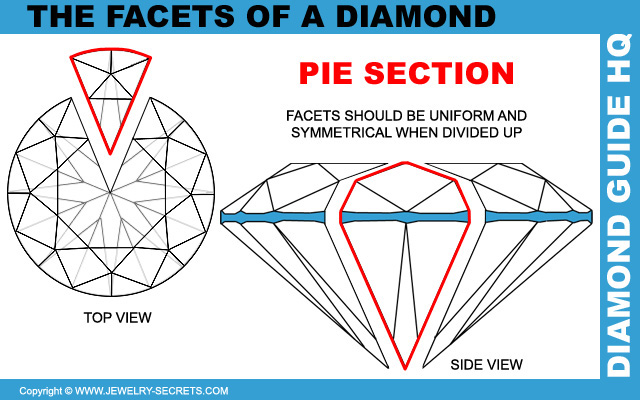
This is Symmetry at its best. This kind of Symmetry leads us to see those lovely Hearts and Arrows that everyone is always talking about.
Hearts and Arrows
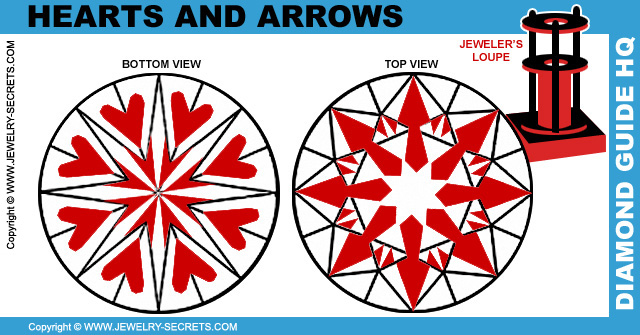
As seen in a real Diamond image below of Arrows… (because we’re only seeing the Top View)
Note that even in a True Hearts and Arrows AGS Certified Diamond, the arrows don’t photograph perfect! :)
Hearts and Arrows (also known as Super-Ideal Cuts) are the combination of a Diamond having both an Excellent Cut Grade, but an Excellent Symmetry Grade and Polish Grade as well.
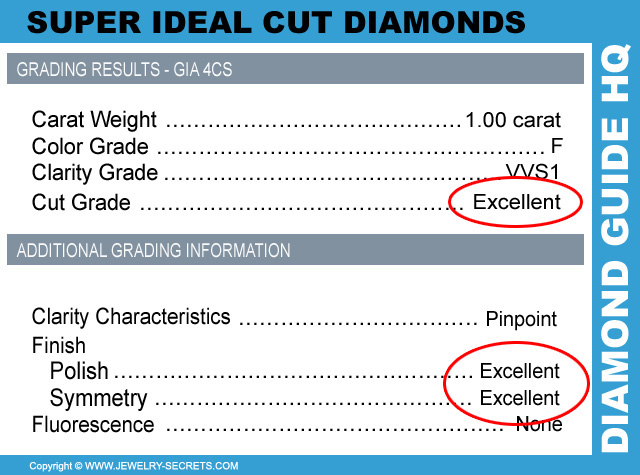
Jewelry Stores often skimp and simplify Symmetry down to 2 things:
- Diamonds that are Cut too Deep
- Diamonds that are Cut too Shallow
This is an easy way out, but it’s a start. It makes people think about the proportions of a stone more. Because many just dismiss Cut and Symmetry as nothing more than the Shape and Size of the stone. And that’s NOT the case!
Nail Head
If your Diamond is Cut too Deep, meaning the distance between the Table and the Culet (the entire Thickness of the Diamond) is deeper than normal, then your Diamond will lose light out of the bottom of the stone and give the Diamond a dark center, which is often referred to as a Nail Head.
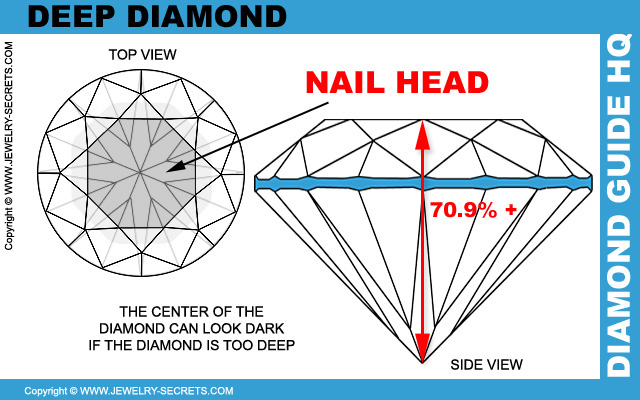
This happens when the Depth of the Diamond gets beyond 70.9% (that’s combining the Crown Depth and the Pavilion Depth together for a total Depth %).
Fish Eye
Likewise, when the Diamond is Cut too Shallow, below 51%, light will also be lost through the base of the stone, and give the Diamond a dull appearance. This Shallow Stone is sometimes called a Spread Stone, because the Diamond tends to look much bigger than it really is.
If the stone gets too narrow, or thin, the Girdle of the Diamond gets reflected inside the Pavilion and looks like a circle around the Table… and also looks just like a Fish Eye.
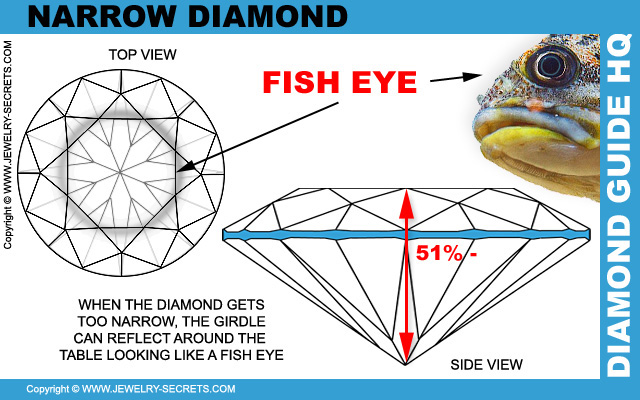
The best Cut to have is a Cut closer to Ideal Cut Standards.
Ideal Cut
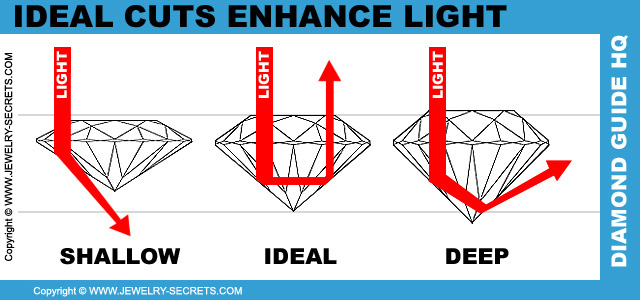
When the Diamond is Cut like this, the light will bounce across the Pavilion and bounce back to the viewer’s eyes. This is what creates all the Brilliance and Fire in a Diamond. Brilliance is the return of White Light. Fire is the return of Bent Light, or Colored Light.
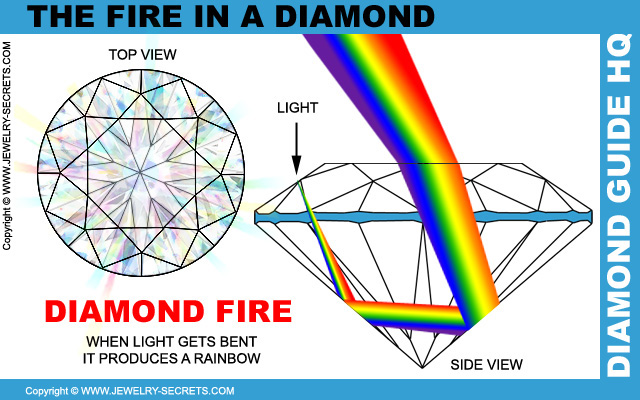
Table Size
One of the greatest obvious clues to Diamond Symmetry is going to be the Diamond Table.
The Table is the top flat part of the Diamond. This flat Facet should be Octagon in Shape. Many times you’ll see this Table (when viewed at a slight angle to reflect the light) out of Proportion. Either longer on one side, or uneven in length.
Compare different size Tables with Ideal and Out of Proportion Tables…
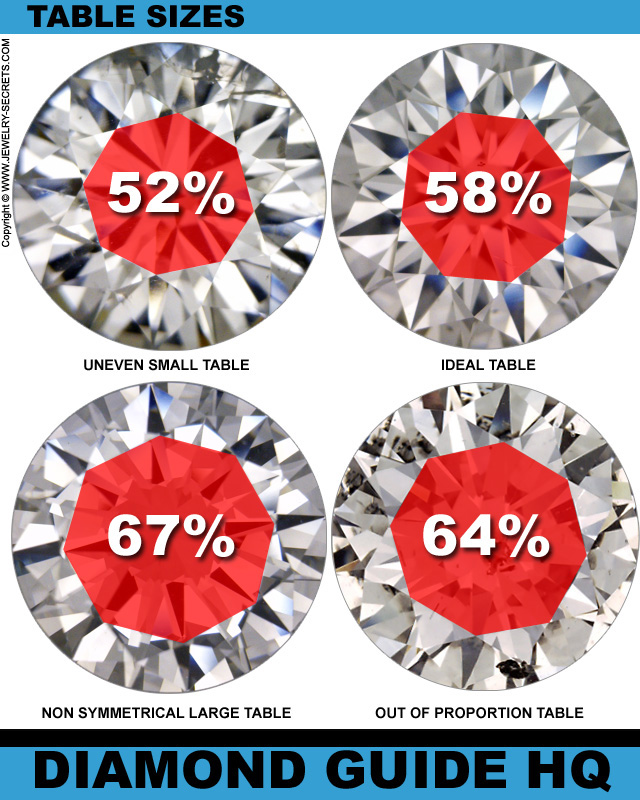
The Table reflection actually falls inside the Diamond and can be seen when viewed from the top down view. The reflection should be about 40-45% between the Culet and the edge of the Table, like shown in the diagram below…
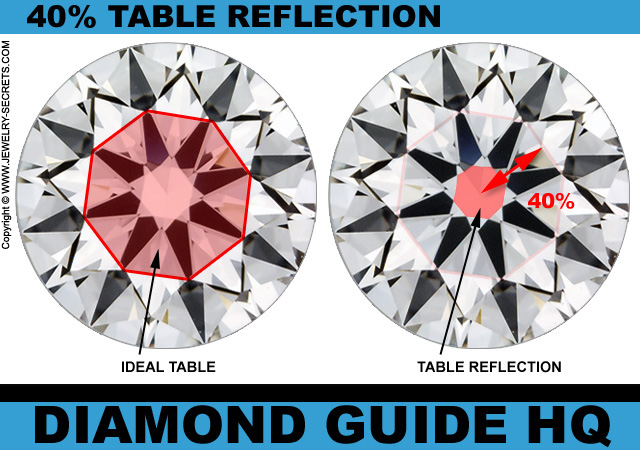
The reflection should also be crisp and clean, Symmetrical and in an Octagon shape with the Star Facets circling around it. The Star Facets reflection is below…
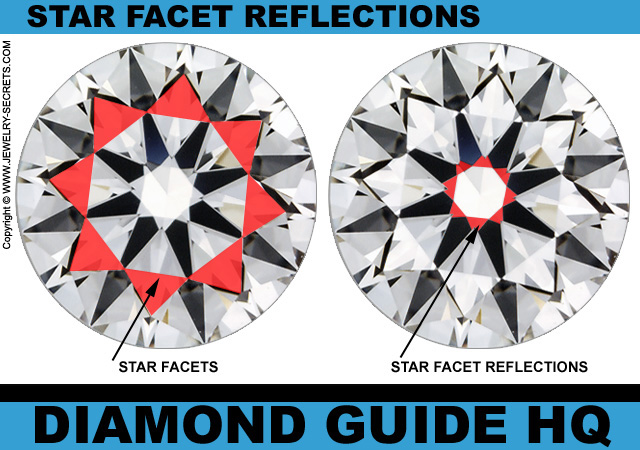
If you draw a circle around the Star Facet Reflections, it should be close to 50% of the way between the Culet and the edge of the Table.
To compare Reflections, check out these distorted Diamond Reflections below…
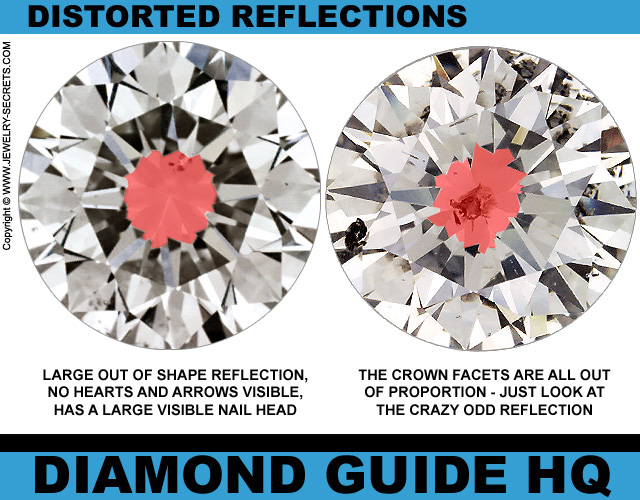
Culet Size
One thing that becomes apparent if you look at enough Diamonds from the face up position is the Culet Size.
A good Culet Size should be either Very Small, Small or Medium in Size (as shown on a GIA Diamond Certificate).
If the Culet is non-existent, it can chip or break during setting if the Jeweler isn’t careful enough.
If the Culet gets too Large, it will actually look like your Diamond has a hole in it.
See the different Culet Sizes below…
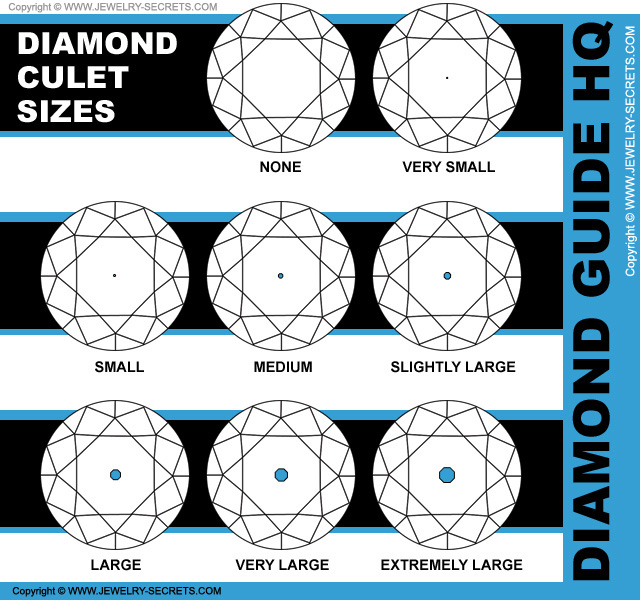
One other thing to note about the Culet is this: It should be directly center of your Diamond. If the Culet is off-center, then the whole Diamond can look lopsided and will harm the Brilliance, Fire and Beauty of the stone.
Take a look at the Slightly Large Off-Center Culet below…
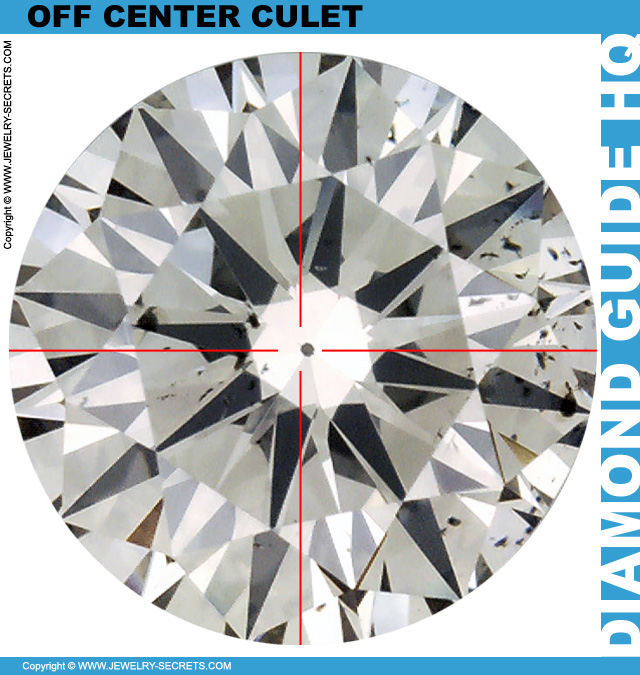
Girdle Size
Tip the stone sideways and take a look at the Girdle of the Diamond. That’s the fine rim that runs all the way around the Diamond (like a belt). It divides the top portion of the Diamond, the Crown, from the bottom portion of the Diamond, the Pavilion. A good Girdle to have is either Thin, Medium or Slightly Thick in size.
I would advise against a Diamond that has an Extremely Thin or Very Thin Girdle, for it can Chip or Break easily during setting or wearing.
A proper Girdle (Thin, Medium or Slightly Thick) flattens out the sharp pointed edge and gives the Prongs of the Ring a better grip on the Diamond.
If the Girdle gets Thick or beyond, it adds extra weight to the Diamond, gets very noticeable to the eyes and can detract from the Beauty of the stone.
Take a look at the different Girdle Sizes below…
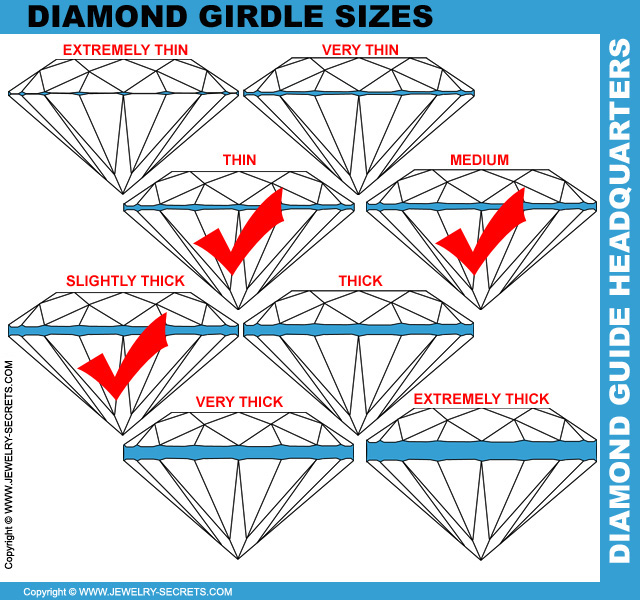
What’s more important to Symmetry is the consistency of the Girdle. A Good Girdle will be equal, with even hills and valleys all the way around the stone. A Poor Girdle has uneven hills and valleys and may vary from Thin to Very Thick in spots. Take a look below…
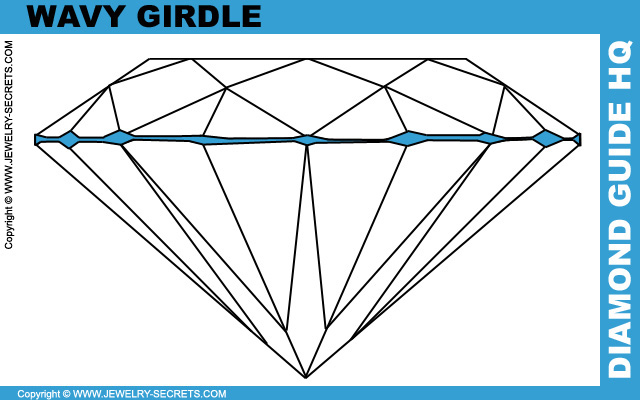
These are often called Wavy Girdles and will really show you that the Diamond Symmetry is way off. You will also note this on a Diamond Report, for it will say something like: Very Thin to Extremely Thick under the Girdle listing.
Thickness variation is like a flat tire, it throws off the entire balance of the stone.
Misalignment of Facets
Now, while you have the Diamond turned sideways, take a look at how the Upper and Lower Girdle Facets line up. This is a great indication of how your Diamond is Cut.
The points should align from top to bottom. If they don’t match up, the proportions are off and your Diamond won’t sparkle as much as it should.
Also take a closer look at the points… They should come to a POINT and not a chopped off variation like the one shown in the image below…
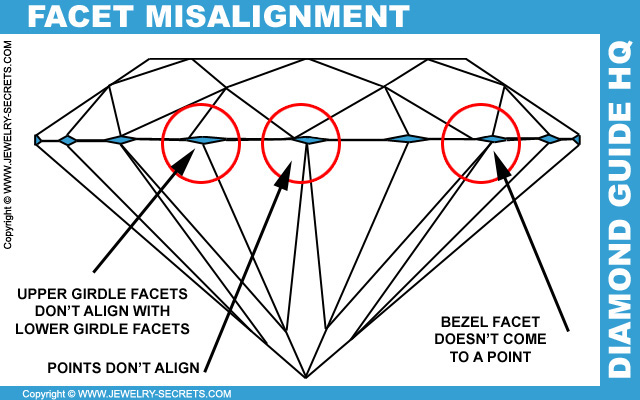
Extra Facets
One other factor that can be a telling sign are Extra Facets. Extra Facets generally show up around the Girdle. They are meant to rid the stone of Inclusions that fall too close to the edge of the Diamond.
Removing a Black Carbon Spot from the underside of a stone will not harm the Sparkle of a stone in the least. In fact, it will improve the Clarity of the stone since it removes Flaws. That in itself will also increase the Diamond’s Value. That is, if it’s just a “little” Extra Facet…
But, if the Diamond has larger Extra Facets, or more than one Extra Facet, then it could really harm the Symmetry of the stone and throw all the proportions off. It could even make the Diamond look lopsided.
Compare an Extra Facet below the Girdle to Extra Facets on top of the Crown to see what I mean…
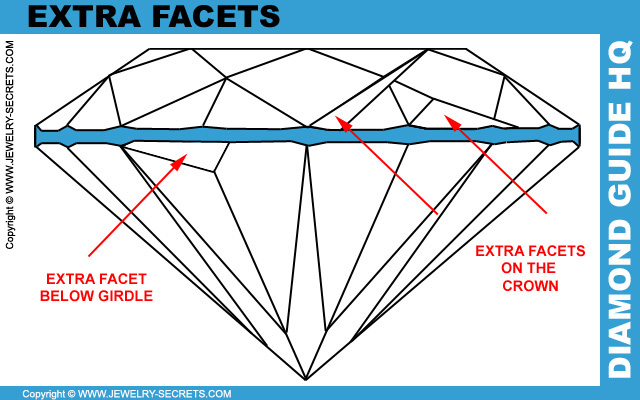
If the Diamond has Extra Facets, it will normally be listed on a GIA Diamond Report under the Comments area.
Parallel Facets
The last thing that you should look at, that’s an easy indication of Symmetry, is the level of the Crown Table and Girdle Facets.
Looking at the Diamond from a side view, see if the Crown looks flat or on an angle.
Does it raise up on one side more than the other? Does the flat Table look parallel to the Girdle?
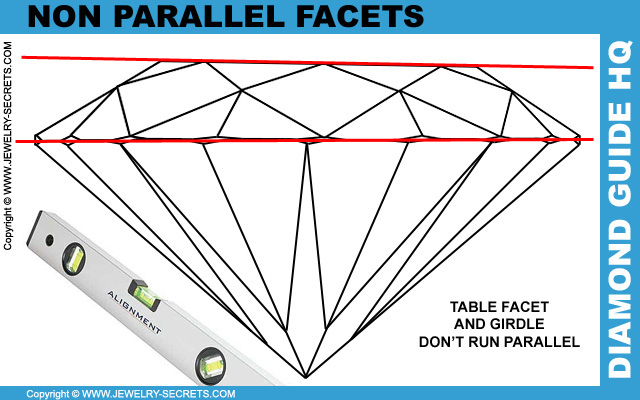
Things like this can cause the Diamond to have uneven Sparkle, odd shadows, and even flat or lifeless life.
The better the Symmetry, the better the Diamond Quality, Value and Beauty!
GIA Symmetry Grades
GIA Grades Symmetry (listed under Finish) with 5 Different Categories:
- Excellent
- Very Good
- Good
- Fair
- Poor
Obviously, if you want the best looking, brightest, most sparkliest and beautiful Diamond you can, strive for a Diamond with Excellent Symmetry.
Excellent Symmetry will make the Diamond look bigger and brighter than any Diamond you compare it to.
Of course, this is also saying the Diamond you select is of Good Clarity (SI1 or higher) and a Good Color (G-H or higher). That way the Diamond can perform at its full potential.
Very Good Symmetry is great as well. Most people will never be able to tell the difference between Very Good and Excellent. But when you get into the Good (average) range, or lower, you’ll start to see the differences easier. The Diamond won’t sparkle as much, and believe me, sparkle is the key to any Diamond!
A couple other things that can also affect Symmetry are things like: Naturals and Missing Facets.
Naturals
Naturals are natural pieces of the rough rock left behind on the edge of the Girdle or Facet. It’s like a knot in a tree. It just happens to be a rough area that doesn’t get polished like the rest of the stone. Naturals will be listed on the Diamond Report as well.
Naturals are also the #1 spot that Trigons show up on. Trigons are the natural triangular growth of the Diamond Crystals. They are very, very cool! :)
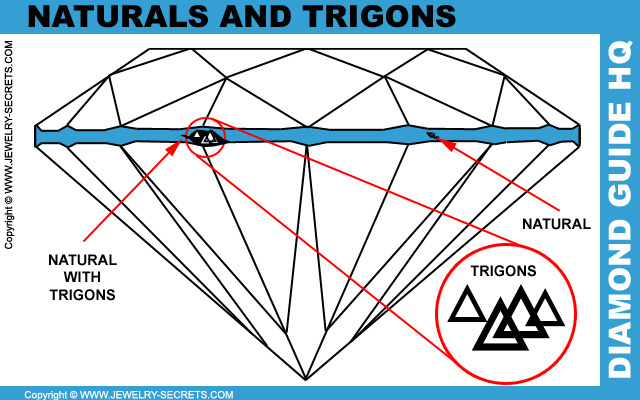
Missing Facets
Missing Facets are literally an entire Facet being left out of the Cutting process. It’s not Cut into the stone for some reason. Usually it’s because the Symmetry is really off, and they may want to preserve as much Carat Weight as possible.
I will say this, in 25 years of looking at Diamonds under the scope, I have never seen a Diamond with a missing Facet, so chances are good, you won’t either!
Misaligned Facets, Uneven Facets, Thick Girdles, Deep Pavilions are all common… But a missing Facet, I’ll have to see one to believe it. :)
Check your Symmetry! The easiest way is just to look at the Diamond Report or Certificate. It sums it all up in one word: EXCELLENT!
And Excellent is what I would advise you to buy. Excellent or Very Good at the least.
You do want your Diamond to sparkle like a million dollars don’t you?
I would! :)


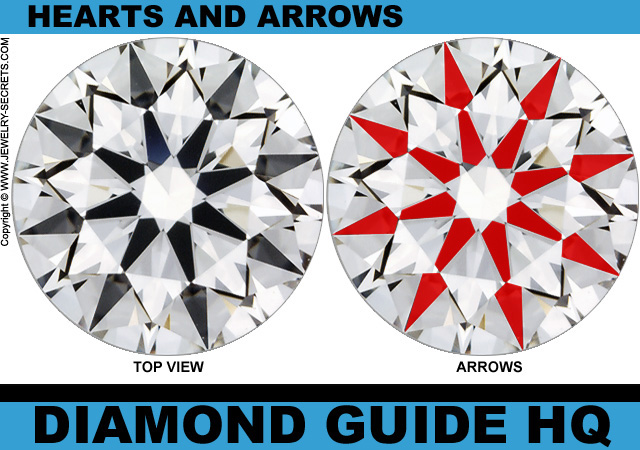


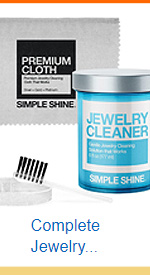
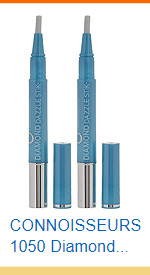

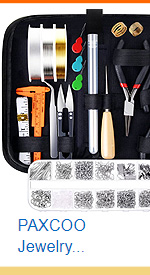
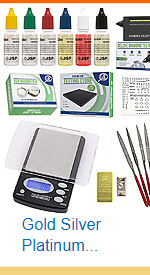
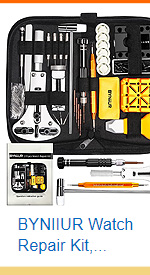
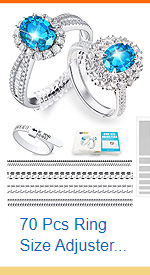
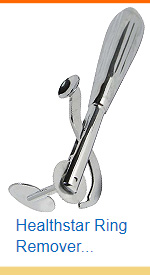
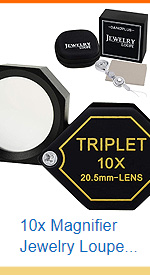
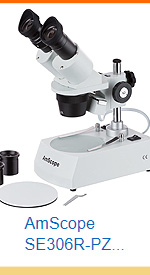




Leave a comment